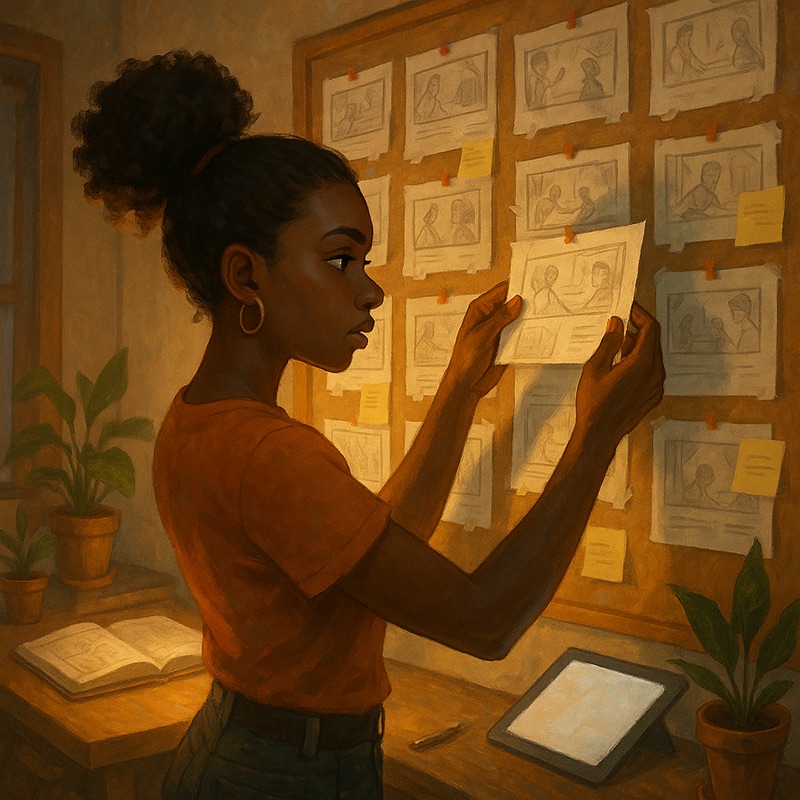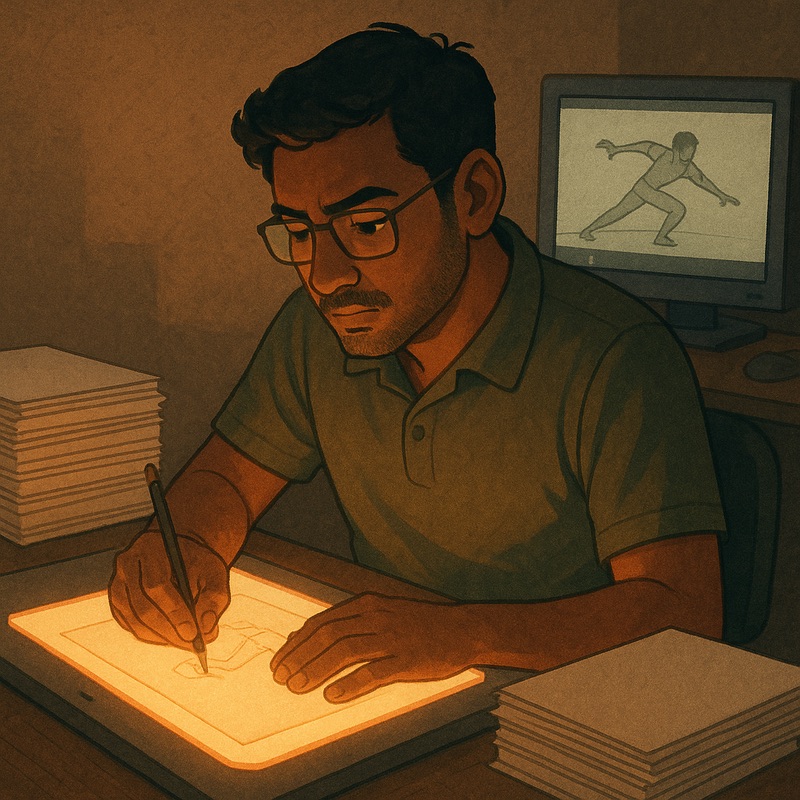Angela sits at her desk, staring at a half-finished sketch on her tablet. Her pencil hovers mid-air, and she sighs. The excitement that pushed her to start animating now feels tangled in hesitation. Like many beginners, she’s realizing that learning animation can be just as confusing as it is inspiring. It’s easy to fall into traps that slow your growth or steal your motivation before you really begin. In this post, you’ll learn about five common beginner mistakes: skipping the fundamentals, trying to learn too much software at once, focusing on style instead of motion, comparing yourself to professionals, and not animating enough. You’ll also see how to turn each one into progress that builds consistency and confidence over time.
Before we dive into each one, picture the early animation journey as a mix of curiosity and chaos. Tools are scattered, tutorials are open, and new ideas clash with fatigue.

Small, steady improvements build fastest when your workflow stays simple and repeatable.
Skipping the Fundamentals
It’s tempting to chase cool effects or jump straight into complex characters the moment you open your software. However, the 12 Principles of Animation are not optional. They form the invisible framework that makes every scene believable. These fundamentals, like squash and stretch, anticipation, and timing, are what separate smooth animation from stiff motion.

When Angela practices these, she feels progress click frame by frame. The 12 Principles of Animation build muscle memory that translates across any style or tool. Try short drills like bouncing balls, swinging pendulums, or simple walk cycles. They might seem small, but they’ll strengthen your understanding faster than any fancy scene could.
Trying to Learn Too Much Software at Once
Many beginners believe mastering every program means mastering animation. However, depth always beats variety. Knowing one tool deeply helps you animate faster than juggling five you barely understand. When you jump between Blender, Toon Boom, and After Effects in the same week, your time shifts from animating to searching menus.

Once Angela stopped bouncing between apps and learned where every keyframe lived, her focus and her animation quality improved almost overnight. The fix is simple. Pick one beginner-friendly tool and stay loyal to it for a while. Flip-a-Clip and Krita are perfect starting points.
Focusing on Style Over Motion
It’s easy to get caught up designing a beautiful character and forget that animation lives in motion. Yet polish means nothing if the movement doesn’t feel alive. The heart of animation is always in motion, not appearance.

Angela discovered that timing and spacing made her sketches feel real long before she learned cleanup or shading. Instead of stressing about color palettes or line work, start by making your poses clear and your motion readable. Draw stick figures if needed. If their emotion comes through in roughs, your finished piece will shine later. That’s when she realized that style is what you see, but motion is what you feel.
Comparing Yourself to Professionals
Scrolling through social media can make anyone feel behind. Still, you can’t compare your first day to someone else’s tenth year. Every professional once struggled through the same awkward first frames. Those polished animations took years of small, consistent effort.

When Angela catches herself feeling small next to studio reels, she remembers that every pro once struggled with their first bouncing ball too. Use them for inspiration, not competition. Instead of comparing results, compare habits. Notice how often you draw, how long you focus, and how you improve between attempts.
Not Animating Enough
The final trap is also the simplest. You can’t improve at animation if you’re not animating. That’s because animation works like a muscle. The more often you use it, the stronger your instincts become. You don’t need marathon sessions. Even ten minutes a day compounds fast. Small projects let you finish, review, and adjust, and all of these steps are key to progress.
Angela now practices before work each morning, just one object moving across the screen. It’s not glamorous, but it’s consistent, and that consistency is paying off.
Over time, that small habit began to change how Angela viewed her creative process. She stopped chasing perfection and started valuing progress instead. That shift naturally leads into one final idea worth holding onto.
Want to turn these lessons into guided, structured practice? Here’s a great next step worth exploring:
Final Thoughts
After weeks of repetition and small breakthroughs, Angela began to see that growth in animation isn’t about speed or talent. It’s about returning to the work again and again until it feels like second nature, and consistency, not perfection, is what separates beginners who quit from beginners who grow. In this post, we tackled five common mistakes: skipping fundamentals, spreading focus across too many tools, obsessing over style, comparing progress unfairly, and not practicing often enough. Each one has a simple fix rooted in daily habit. Angela learned that steady repetition beats perfect planning every time. Start where you are, pick one thing to improve, and let every finished frame remind you why you started. The more you show up, the faster your confidence and your characters come to life.




























